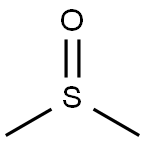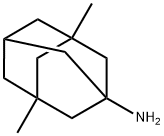Memantine HCl
Synonym(s):3,5-Dimethyl-1-adamantanamine hydrochloride;3,5-Dimethylamantadine hydrochloride;3,5-Dimethyltricyclo[3.3.1.13,7]decan-1-amine hydrochloride;Memantine hydrochloride
- CAS NO.:41100-52-1
- Empirical Formula: C12H22ClN
- Molecular Weight: 215.76
- MDL number: MFCD00214336
- EINECS: 255-219-6
- SAFETY DATA SHEET (SDS)
- Update Date: 2025-03-07 18:45:43

What is Memantine HCl?
Description
Memantine, a NMDA receptor antagonist, was co-developed by Forest Laboratories with Merz Pharmaceuticals and marketed under the trade name Namenda for the treatment of Alzheimer’s disease in the US after its approval in October, 2003. This drug has been available in many European and Asian markets before getting approval in the US.
Description
Memantine is an NMDA receptor antagonist that blocks NMDA-induced currents in rat retinal ganglion cells by 90% when used at a concentration of 12 μM. It reverses inhibition of dephosphorylation of the synthetic tau phosphopeptide p17 (tau194-207) induced by the endogenous inhibitor of protein phosphatase 2A (PP2A) I1PP2A in vitro. In vivo, memantine (2 mg/kg) restores PP2A activity, decreases GSK-3β and amyloid-β (Aβ) levels in the hippocampus, cerebral cortex, and ventricular areas, and attenuates spatial learning and memory in the AAV1-I1PP2A rat model of Alzheimer''s disease. Memantine (20 mg/kg) reduces responding on the ethanol-associated lever in a cue-induced ethanol-seeking test in rats. It also decreases secretion of matrix metalloproteinase-9 (MMP-9), degradation of collagen IV, the size of cerebral ischemia-induced brain infarcts, and neuronal cell death in a mouse model of focal cerebral ischemia.
Chemical properties
Crystalline Solid
The Uses of Memantine HCl
Used as an antiparkinsonian and antispasmodic
The Uses of Memantine HCl
Antiparkinsonian;Dopaminergic agonist
The Uses of Memantine HCl
Anti Alzheimer's
What are the applications of Application
Memantine HCl has been used:
- as a media supplement to serve as a control to study the neuroprotective effects of erythropoietin in N-methyl-D-aspartate receptor-induced toxicity.
- to intraperitoneally inject experimental animal to study its effect on traumatic injury.
- as a test compound to determine the dynamic range and selectivity of retinal pigment epithelium tissue penetration.
Definition
ChEBI: A hydrochloride obtained by reaction of memantine with one equivalent of hydrochloric acid. A low to moderate affinity uncompetitive (open-channel); NMDA receptor antagonist which binds preferentially to the NMDA receptor-operated cation channels.
brand name
Namenda(Forest).
Interactions
Memantine HCl may interact with cimetidine, nicotine, ranitidine, quinidine, sodium bicarbonate, antiviral medication, cold or cough medicine containing dextromethorphan, diuretics (water pills), medicine to treat glaucoma, or oral diabetes medicine containing metformin. Tell your doctor all prescription and over-the-counter medications you use.
Side Effects
Memantine HCl may cause serious side effects including:
severe headache,
blurred vision,
pounding in your neck or years,
convulsions (seizure), and
unusual changes in mood or behavior.
General Description
Pharmaceutical secondary standards for application in quality control, provide pharma laboratories and manufacturers with a convenient and cost-effective alternative to the preparation of in-house working standards.
Memantine Hydrochloride is a drug used for treating the Alzheimer′s disease by means of reducing abnormal activity in the brain. It can help patients suffering from dementia as it assists them to think more clearly and perform their chores with ease.
Biochem/physiol Actions
Memantine is effective against Alzheimer′s disease and Parkinson′s disease. It is also useful in treating epilepsy, motor neurone disease and trauma.
Side Effects
Serious side effects:
Allergic reaction. Symptoms can include:
swelling of your tongue, lips, or face; shortness of breath; skin rash; hives
Hepatitis (inflammation of the liver). Symptoms can include:
yellowing of your skin or the whites of your eyes.
Pancreatitis (inflammation of the pancreas). Symptoms can include:
severe nausea; severe abdominal pain.
Change in mental health. Symptoms can include:
hallucinations; thoughts of suicide.
Congestive heart failure. Symptoms can include:
shortness of breath; swelling in your feet and ankles.
Synthesis
Memantine (XV) or 1-amino- 3,5-dimethyladamantane hydrochloride was first synthesized by Lilly as an anti-diabetic agent but was ineffective in lowering blood sugar. Several syntheses have been detailed in the literature. However the simplest synthesis of the drug was done in one step from the commercially available 3,5-dimethyl adamantine (122). Treatment of 122 with nitrogen trichloride (CAUTION: very explosive gas!) in the presence of aluminum trichloride (ratio of 1.5:1.2) gave the desired amino adamantine in 86% yield. However, a much safer alternative has been reported by Lilly scientists. Heating the commercially available 3,5-dimethyladamantane 122 in bromine gave the bromo derivative 123 (86%) which was then reacted with sulfuric acid in acetonitrile to provide quantitatively acetyl amino derivative 124 after aqueous workup. Hydrolysis of the acetyl group was done by heating 124 with sodium hydroxide in diethylene glycol to give 1-amino -3,5- adamantane (96%), which was then made into the hydrochloride salt in ether and recrystallized from ether and alcohol mixture to provide the final product memantine hydrochoride XV.

Drug interactions
Drugs used to treat glaucoma:
Taking these drugs with memantine can increase the amount of memantine in your body. This can lead to more side effects. Examples of these drugs include:
acetazolamide and methazolamide.
Sodium bicarbonate:
Taking memantine with sodium bicarbonate, which can be used to treat heartburn, can increase the amount of memantine in your body. This can lead to more side effects.
Parkinson’s disease medication:
Amantadine works in a similar way to memantine. Taking them together may lead to increased side effects.
Anesthesia medication:
Ketamine works in a similar way to memantine. Taking them together may lead to increased side effects.
Cough medication:
Dextromethorphan works in a similar way to memantine. Taking them together may lead to increased side effects.
storage
Room temperature
References
1) Chen and Lipton (1997), Mechanism of memantine block of NMDA-activated channels in rat retinal ganglion cells: uncompetitive antagonism; J. Physiol. 499 27 2) Chen et al. (1998), Neuroprotective concentrations of the N-methyl-D-aspartate open-channel blocker memantine are effective without cytoplasmic vacuolation following post-ischemic administration and do not block maze learning or long-term potentiation; Neuroscience 86 1121 3) Lipton et al. (2005), The molecular basis of memantine action in Alzheimer’s disease and other neurologic disorders: low-affinity, uncompetitive antagonism; Curr. Alzheimer. Res. 2 155 4) Parsons et al. (1999), Memantine is a clinically well tolerated N-methyl-D-aspartate (NMDA) receptor antagonist—a review of preclinical data; Neuropharmacology 38 735 5) Witt et al. (2004), Memantine hydrochloride; Nat. Rev. Drug Discov. 3 109
Properties of Memantine HCl
| Melting point: | 292 °C |
| storage temp. | Inert atmosphere,2-8°C |
| solubility | Soluble in Water (up to 20 mg/ml) |
| form | Fine Powder |
| color | White |
| Water Solubility | Soluble in water (100mM) |
| Merck | 14,5806 |
| Stability: | Stable for 1 year from date of purchase as supplied. Solutions in distilled water may be stored at -20°C for up to 2 months. |
| InChI | InChI=1S/C12H21N.ClH/c1-10-3-9-4-11(2,6-10)8-12(13,5-9)7-10;/h9H,3-8,13H2,1-2H3;1H |
| CAS DataBase Reference | 41100-52-1(CAS DataBase Reference) |
Safety information for Memantine HCl
| Signal word | Warning |
| Pictogram(s) |
 Exclamation Mark Irritant GHS07 |
| GHS Hazard Statements |
H315:Skin corrosion/irritation H319:Serious eye damage/eye irritation |
| Precautionary Statement Codes |
P264:Wash hands thoroughly after handling. P264:Wash skin thouroughly after handling. P280:Wear protective gloves/protective clothing/eye protection/face protection. |
Computed Descriptors for Memantine HCl
| InChIKey | LDDHMLJTFXJGPI-UHFFFAOYSA-N |
| SMILES | C12(N)CC3(C)CC(CC(C)(C3)C1)C2.[H]Cl |
Memantine HCl manufacturer
New Products
1-Boc-4-cyanopiperidine tert-Butyl carbazate 1-(TERT-BUTOXYCARBONYL)-2-PYRROLIDINONE TETRABUTYLAMMONIUM CYANIDE TETRAHYDRO-2H-PYRAN-3-OL 3-Pyridineacrylic acid Nickel(II) perchlorate hexahydrate, 98% 4-Bromophenylacetonitrile, 95% 3-Bromo-4-fluoroaniline, 97% Sodium tetraborate decahydrate, 98% Palladium(II) acetate, trimer, Pd 99% 4-Bromo-2-chlorotoluene, 97% Tadalafil Clopidogrel bisulfate Sitagliptin Phosphate Monohydrate Cabergoline Fexofinadine HCl Etoricoxib 4-Amino Acetophenone 2-Chloro Acetophenone Amlodipine Base 2,3,5-Triiodobenzoic Acid Pyrrolidine Diiodo PentoxideRelated products of tetrahydrofuran








You may like
-
 41100-52-1 98%View Details
41100-52-1 98%View Details
41100-52-1 -
 41100-52-1 98%View Details
41100-52-1 98%View Details
41100-52-1 -
 Memantine CAS 41100-52-1View Details
Memantine CAS 41100-52-1View Details
41100-52-1 -
 3,5-Dimethyl-1-adamantanamine Hydrochloride CAS 41100-52-1View Details
3,5-Dimethyl-1-adamantanamine Hydrochloride CAS 41100-52-1View Details
41100-52-1 -
 41100-52-1 Memantine hydrochloride 99%View Details
41100-52-1 Memantine hydrochloride 99%View Details
41100-52-1 -
 Memantine Hydrochloride CAS 41100-52-1View Details
Memantine Hydrochloride CAS 41100-52-1View Details
41100-52-1 -
 Memantine hydrochloride CAS 41100-52-1View Details
Memantine hydrochloride CAS 41100-52-1View Details
41100-52-1 -
 Memantine hydrochloride CAS 41100-52-1View Details
Memantine hydrochloride CAS 41100-52-1View Details
41100-52-1
